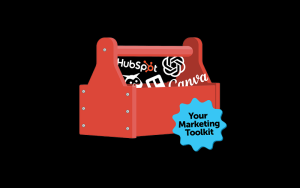How will my print publication will look once it’s finished? What is the story that will be told in the pages that flow one after another? How will the order and orientation of such pages support the message? These are key questions to ask yourself when producing impactful print pieces, and so often overlooked.
It’s time to discuss the necessity of planning and designing in the print world, and how pagination contributes to effective print products. To do this, let’s go over the definition of pagination, the pagination process, and where it is most useful in a business setting.
What Is Pagination?
In the print world, pagination is the layout of a print piece and how it will look when it’s printed and folded on actual paper. This is essential for brochures and magazines, as brochure pagination and magazine imposition are key when looking to create a perfectly designed print product.
Essentially, when creating any brochure, magazine, or alternative print design, you will want to analyze your pre-press checklist and ensure that your pre-press production falls in line with your finished product and the look you are hoping to create.
Because pagination is so important for professional print layouts, the best way to tackle a pagination project is to create a print layout in a design system such as InDesign and make adjustments until you are happy with the look of the finalized product.
What Is the Pagination Process Like?
The first step in the pagination process is to mentally visualize your brochure pagination or magazine imposition. This is when you will determine any embellishments you hope to incorporate or particular layout elements you wish to focus on.
The next step is to transfer your project into a design software such as InDesign. This platform will allow you to see exactly what your project will look like when printed, and allow you to make any necessary changes before sending it over to your printing vendor.
When putting your design into this software, add page numbers to each of your even- and odd-numbered pages. From there, you can move around design elements on each page in order to make the pages look as visually appealing as possible. This is the most important part of the pre-press production process.
Afterwards, you can take all of your pages, compile them together in the correct order, and submit them to be printed and actualized.
Where Would Pagination Be Most Useful in Business?
You may be wondering where this method is most useful and why. The answer is simple; pre-press production is always useful, and pagination allows you to do just that.
However, the most common print pieces that utilize pagination include brochures, magazines, pamphlets, and booklets. All of these design elements require a certain level of finesse that pagination provides prior to the printing process.
Whether you are hoping for an eye-catching auto brochure or a magazine that shows consistency and class, pagination is the key. In fact, according to the CEO of Smashing Magazine, “Structure and hierarchy reduce complexity and improve readability. The more organized your articles are, the easier it is for users to follow your arguments and get the message you are trying to deliver.”
Pagination is ideal for any print element that needs structure and flow in its design. Just as the design itself matters, the way it is formatted and displayed is also important.
In the end, pagination is key to stunning brochure and magazine structure. Whether you hope to attract new clients or impress current ones, taking the time to focus on your pagination truly shows in the final product, and is exactly what you need to set yourself apart from the rest.
Looking for an expert to help with pagination on your next print project? Contact us today and see what Ironmark can do for you!




